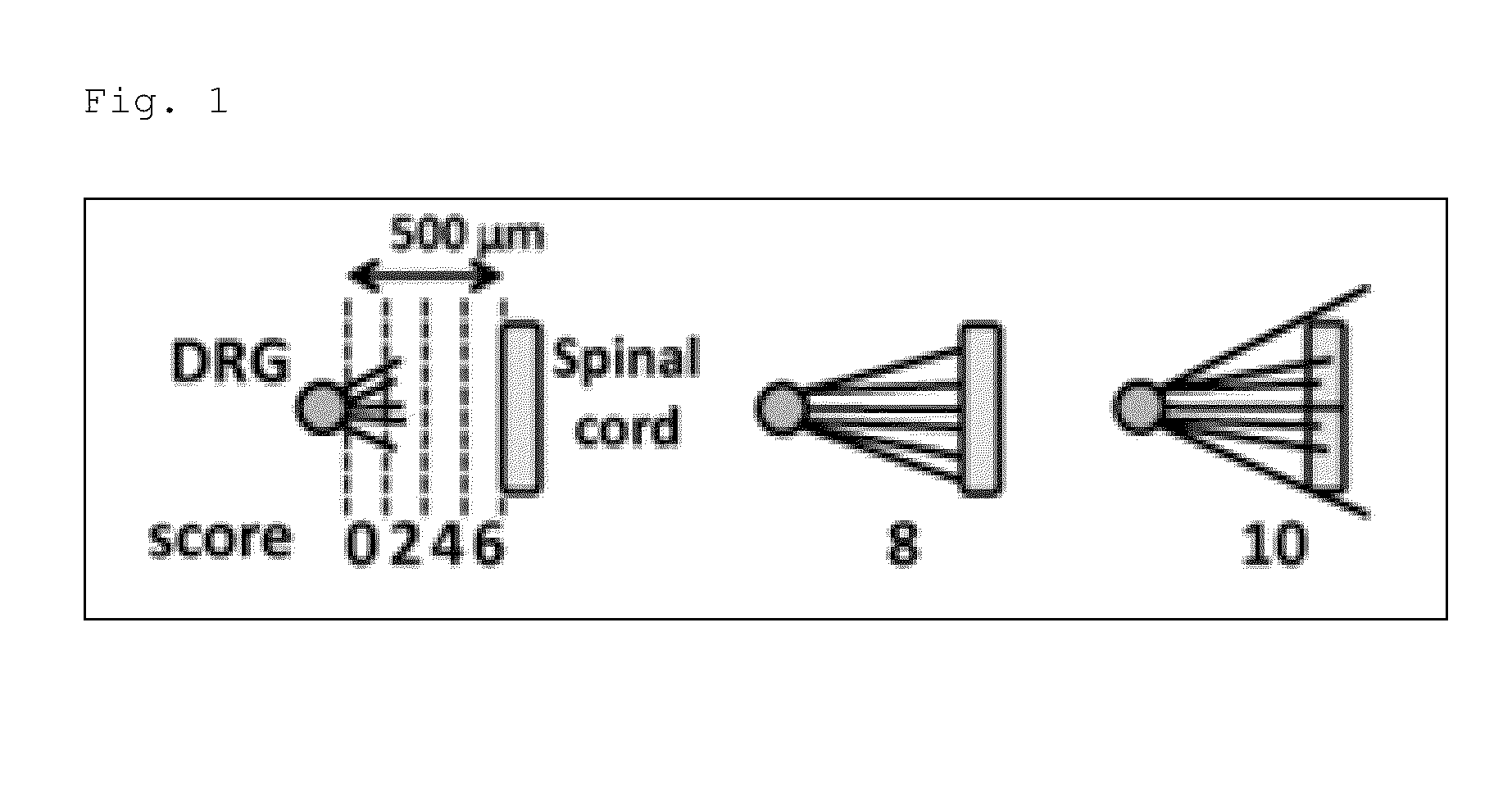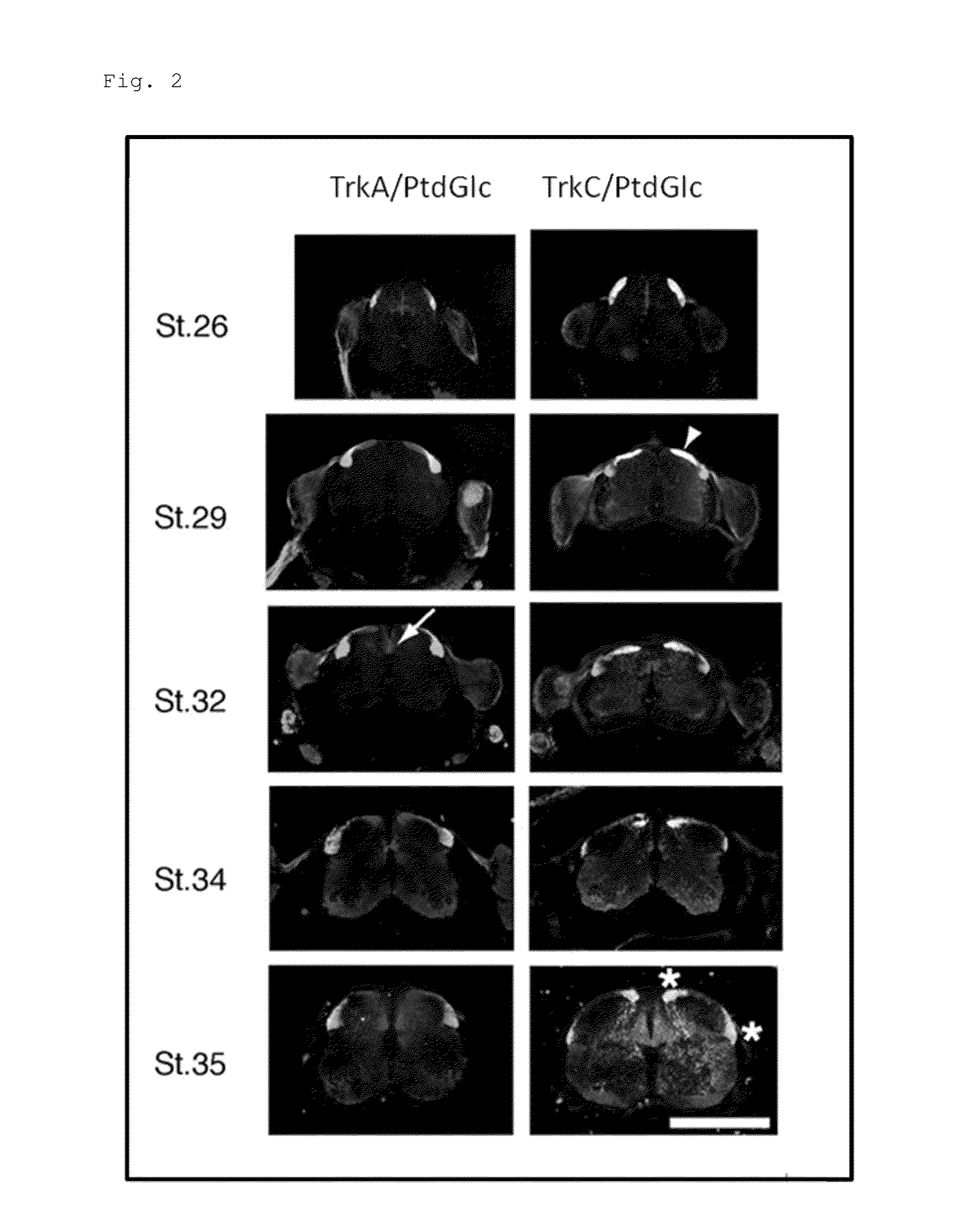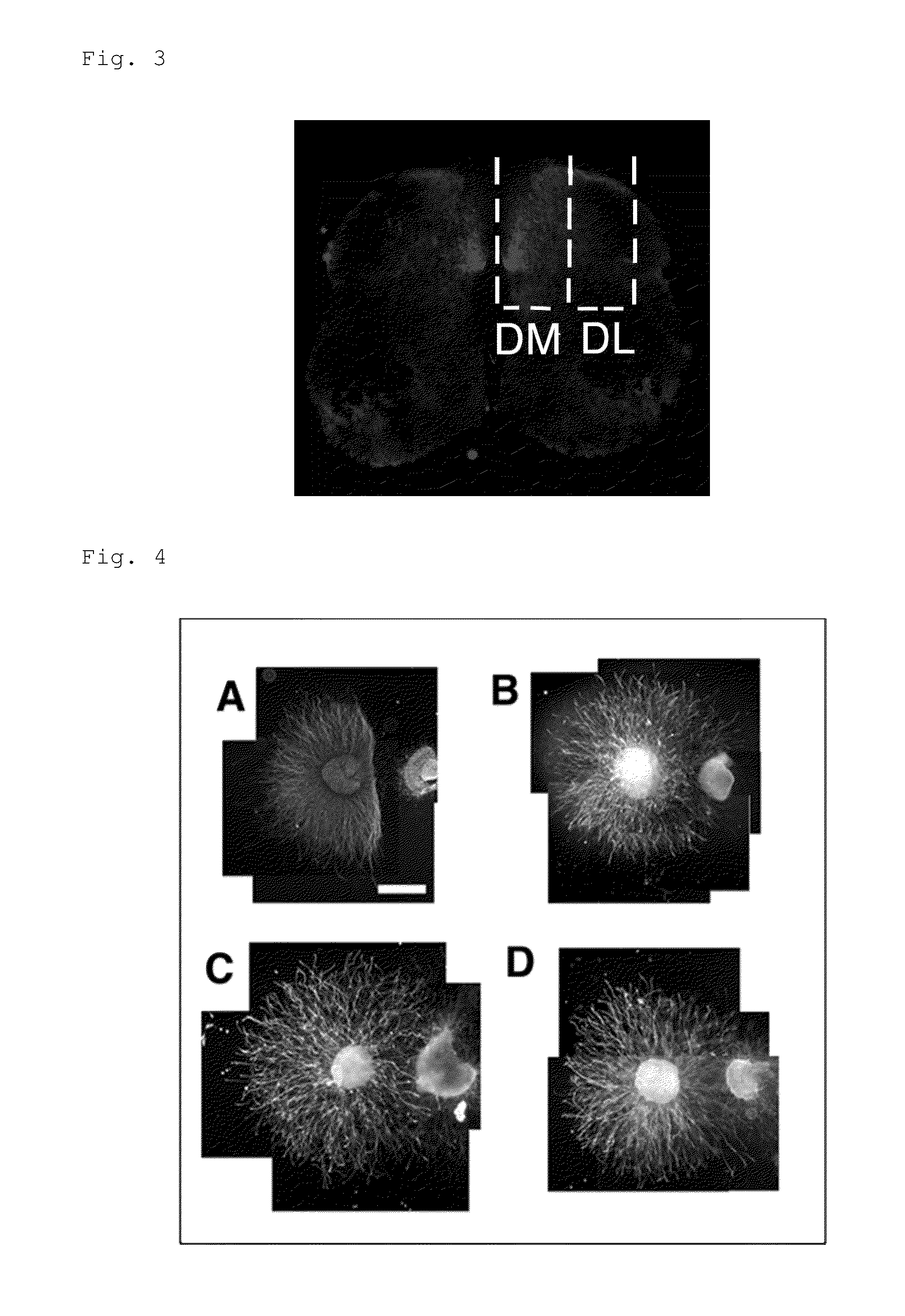Antibody binding to lysophosphatidylglucoside, and composition comprising the same
- Summary
- Abstract
- Description
- Claims
- Application Information
AI Technical Summary
Benefits of technology
Problems solved by technology
Method used
Image
Examples
example 1
[0147]To observe spatial and temporal relations between phosphatidyl-β-D-glucoside (PtdGlc) and DRG sensory neuronal cells in the spinal cord, co-immunostaining (labelling) was performed on embryos at HH Sts. 26, 29, 32, 34, and 35 (corresponding to embryos between approximately E5 (embryonic day 5) to E9 (embryonic day 9)) using the anti-TrkA antibody or the anti-TrkC antibody, and the DIM21 antibody. FIG. 2 shows the obtained result. Note that the white line in FIG. 2 is a scale bar, representing a length of 500 μm. Moreover, in FIG. 2, a portion emitting magenta fluorescence indicates a site stained with the DIM21 antibody, a portion emitting green fluorescence indicates a site stained with the anti-TrkA antibody (left lanes in FIG. 2) or the anti-TrkC antibody (right lanes in FIG. 2).
[0148]As apparent from the result shown in FIG. 2, in the embryonic spinal cord at HH St. 26, a site having a strong immunoreactivity to DIM21 is restricted to the dorsal white matter, while a weak ...
example 2
[0155]In order to verify that PtdGlc or a derivative thereof is a signaling molecule for DRG sensory nerves and acts as a chemorepellent particularly on a TrkA-expressing neuron as described above, organotypic spinal cord / DRG explant culture assay was conducted. A dorsal root ganglion (DRG) explant having a diameter of approximately 250 μm was cultured on a 3-D collagen matrix together with an explant obtained by dissecting the spinal cord. Then, 48 hours after the co-culturing, DRG axon extension was observed. Note that in the present Example, the explant from the spinal cord was dissected and separated into ones derived from dorsal (Dorsolateral, DL) or dorsomedial (DM) side, in other words, sites where the PtdGlc content is low (DL) or high (DM), for use (see FIGS. 2 and 3). FIGS. 4 and 5 show the obtained result. Note that the white line in FIG. 4 is a scale bar representing a length of 500 μm, the numerical values in parentheses in FIG. 5 indicate the number of DRG explants ass...
example 3
[0158]As described in Example 1, PtdGlc is widely expressed in the white matter (see FIG. 2). Thus, it is predicted that the PtdGlc supply source in the spinal cord is not neurons. For this reason, in order to confirm that such a prediction is reasonable, glia in the spinal cord were analyzed by mass spectrometry. Specifically, proliferative glial cells were isolated from the spinal cord at HH St. 35, and cultured for 7 days in vitro. After the culturing was finished, the glial cells and the culture supernatant were analyzed with a nano-liquid chromatography-tandem mass spectrometer (nano-LC / MS / MS). FIG. 6 shows the obtained result. Moreover, using such a glial cell culture, immunostaining was performed instead of the mass spectrometry. FIGS. 8 and 9 show the obtained result. Note that in FIG. 8, a portion emitting green fluorescence indicates a region labelled with an anti-trans it in antibody, and the white line is a scale bar, representing a length of 10 μm. Moreover, in FIG. 9, ...
PUM
| Property | Measurement | Unit |
|---|---|---|
| Composition | aaaaa | aaaaa |
Abstract
Description
Claims
Application Information
 Login to View More
Login to View More - R&D
- Intellectual Property
- Life Sciences
- Materials
- Tech Scout
- Unparalleled Data Quality
- Higher Quality Content
- 60% Fewer Hallucinations
Browse by: Latest US Patents, China's latest patents, Technical Efficacy Thesaurus, Application Domain, Technology Topic, Popular Technical Reports.
© 2025 PatSnap. All rights reserved.Legal|Privacy policy|Modern Slavery Act Transparency Statement|Sitemap|About US| Contact US: help@patsnap.com



